Lately we have seen more and more attempts, some of them very successful, to combine epoxy resins with wood to make the most diverse pieces of furniture. Epoxy resin is not being used now for the first time. Many of you surely remember the flowers or the four-leaf clover immortalized in a piece of resin. Lately, however, designers around the world have been rediscovering resin, using it to create spectacular objects. As interest in these materials is very high, I thought I'd share some of my own, without claiming to be an expert in the field.
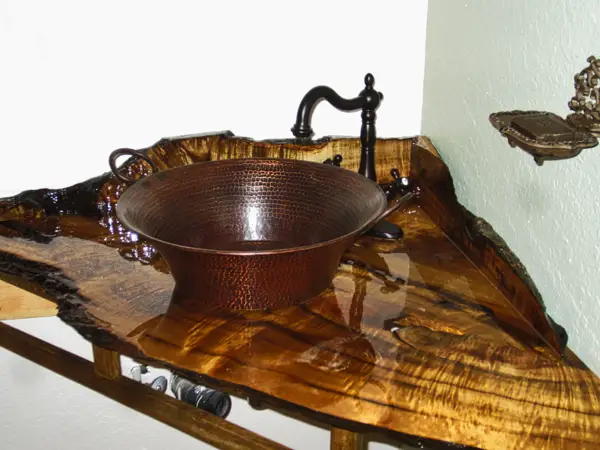
There is no single epoxy resin. They are practically one big family, with the most qualities compared to other synthetic resin families: high resistance to very low or very high temperatures, electrical resistance, very good mechanical resistance, durability, very good moisture resistance, very long lasting. All these qualities make them useful in a wide variety of fields: aeronautics, naval, electrical, electronics, lacquers and paints, adhesives, flooring, etc.
But let's come back to their use to protect wood or in combination with it. One area where they have long been used is boat building. Unlike other resins, epoxy resins have a very high resistance to moisture, which makes coated objects very resistant to degradation in water. The high resistance is due to a different chemical structure from other varnishes. That is why epoxy resins are the preferred material for coating yachts, boats, or other wooden boats.

Epoxy resin is an A+B hardener product. Not all resins have the same mixing ratio. To obtain the qualities described by the manufacturer, the mixing ratio must be strictly observed. If the measurement of the 2 components is not done exactly, the properties of the final product will change. That is why manufacturers always make the packaging according to the mixing ratio (identical for mixing 1:1, or different but proportional for another mixing ratio).
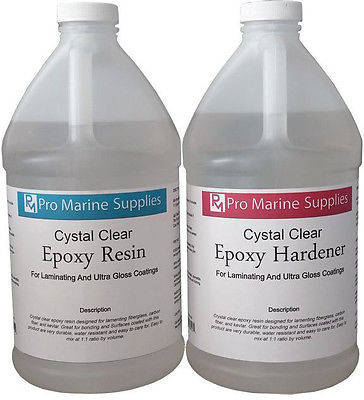
Epoxy resins are simple to use. They are easy to pour and do not bubble during the polymerization (curing) reaction. Both components have low viscosity so no dilution is necessary. They react over a very wide temperature range, from 5 to 150 degrees Celsius (but different catalysts are used). During the reaction there is no shrinkage or shrinkage so the surface is not at risk of cracking or other such defects.
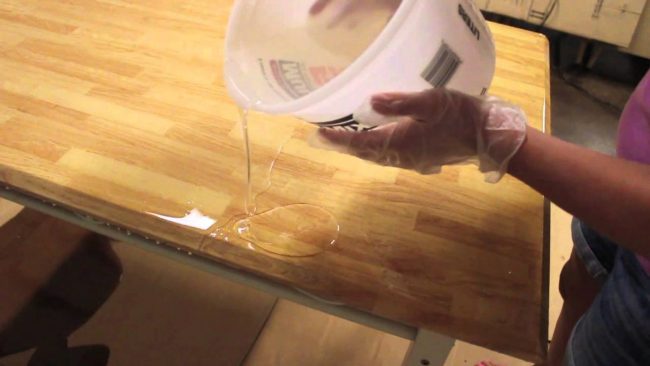
The color of the resin is usually a light yellow-brown to brownish-brown, similar to amber. But there are also transparent, totally colorless resins, which are used to make very clear furniture parts. They can be colored with dyes or pigments, depending on the end result - transparent or opaque.

Mix the two components before application. Pour measured quantities of each component into a container and mix gently. Initially the mixture becomes opalescent, but as it is mixed it becomes transparent. Before pouring it is best left for 5 minutes to allow air bubbles to escape.
Resin is most commonly used to protect table tops or to make them stand out. As it can be poured, a flat surface is easiest to finish. Before pouring the mixture make sure that the surface is very clean, free of dust, oil, paint or other materials that can spoil the appearance or react with the resin. Remember that you will get a clear, transparent surface. Pour the mixture and spread it gently with a spatula (or wide knife) over the entire surface. The excess will drip around the edges so protect the area from getting dirty. On the edges, spread the material with a brush to avoid drips.
If you want a thicker surface, make a template beforehand and fill it with resin. You can put all kinds of objects, they will remain embedded in the resin, creating unique objects.
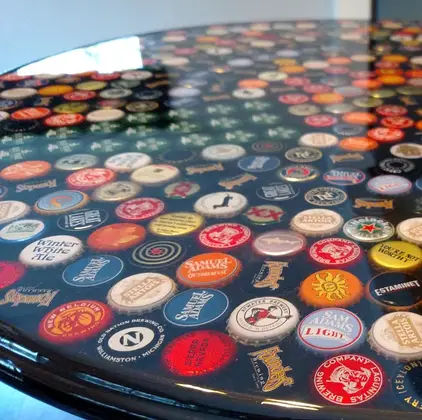
To get a perfectly clear, bubble-free surface, remove bubbles by blowing hot air or using a torch of the kind you use to light the stove. The heat will bring the air to the surface. You can also apply successive coats. Leave for 24 hours to cure, then lightly sand the surface and pour another coat.
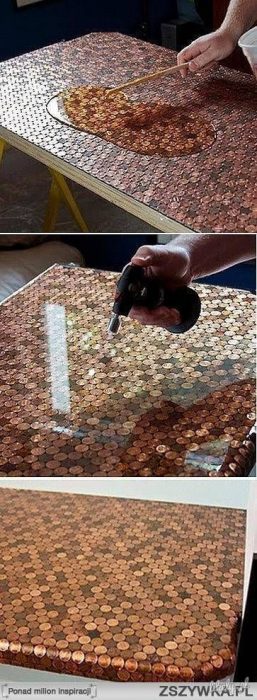
If dust or other particles have become trapped and spoil the surface, it can be sanded. After sanding, it becomes smooth. To restore transparency, wipe it lightly with a cloth soaked in resin.
I was telling you at the beginning about designers who are creating special objects using epoxy resin. Perhaps the most successful of these are those where the resin is combined with reclaimed wood. The effects of the passage of time or the after-effects of insect attack are highlighted by the resin. The result, in my view, is wonderful.
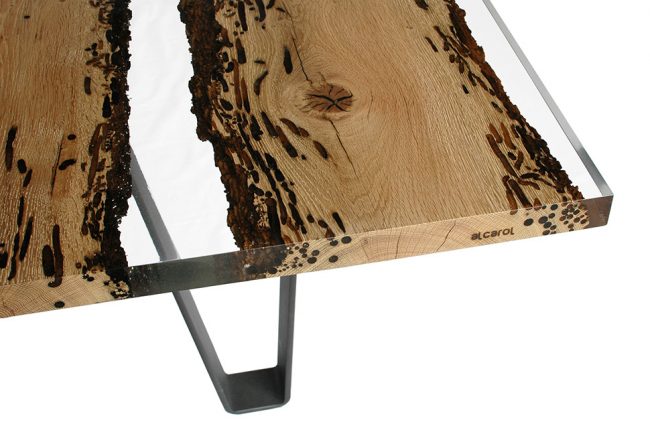
Another fashion I noticed was the embedding of a simple piece of furniture, usually a chair, in a cube of resin. The piece obtained by encasing a Thonet chair is quite spectacular.
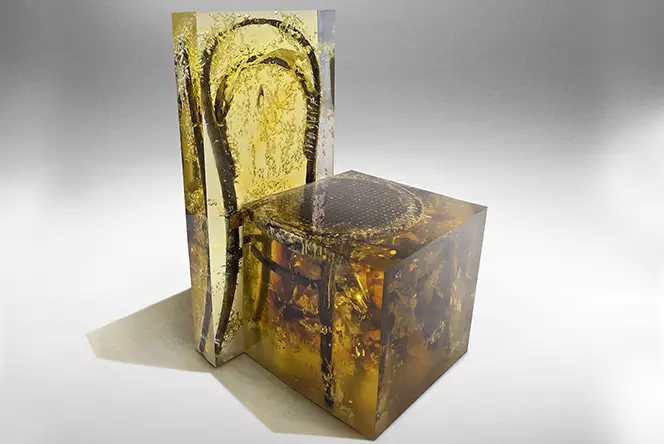
Here too, there are furniture factories that emphasize design and give young people free rein to create objects that are out of the ordinary and classic Romanian furniture.
We can talk endlessly about epoxy resins and the objects that can be made with them. But I think it is time to stop. But I would like you to consider this article as a start. Your additions, suggestions and questions are welcome in the comments area.
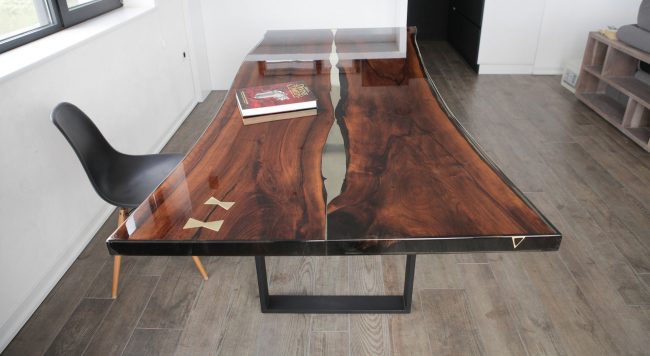





















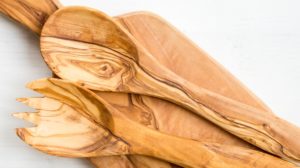



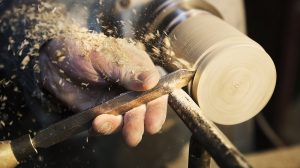
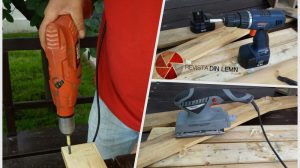

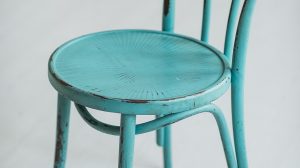




Thank you, you're wonderful!
Where to buy transparent epoxy resins in Romania!
They are available in DIY stores. For smaller quantities search online for "epoxy wood resin".
All the best! 🙂
Nice article and necessary. 🙂
In the interest of amateurs of such works, I would like to point out that transparent epoxy resins for casting (with/without UV resistance) are the resins they need (not to be confused with transparent epoxy resins for lamination, which have a short/very short working time and do not behave well in castings with a layer larger than 1-2 mm). Some transparent epoxy casting resins have self-degassing properties, but not all (please consult the product data sheet before purchasing). It is important to consult the manufacturer's product description in order to identify the maximum layer thickness or volume of material that can be poured to avoid self-heating (situation in which dimensional shrinkage occurs when the mixture cools).
Thank you very much for your clarifications and additions.
Interesting comment, can you point me to some suppliers in Romania?
Thank you!
Hello!
Very interesting article! Thanks a lot for the ideas.
Just one question: as a specialist, can you recommend a specific resin and where I could get it? I read the previous answer, but I am referring to one that you recommend. Is the one used for epoxy floors suitable for application on wood?
Thank you for your time.
A wonderful day.
I'm sorry, but I can't make a recommendation. I have said from the beginning that I do not consider myself a specialist in this field. In the product range Polistucthat we sold were not epoxy resins. Regarding the one for floors, I can tell you that I collaborated years ago with someone who was making epoxy floors that he coloured with our pigmented pastes. I tested it on wood too, but I think I applied too thick a coat and it cracked.
I searched the net for "epoxy wood resins" and there are companies that have such products. In the recommendations you will also find the recommended coating thickness.
I hope you find it useful.
All the best
Hello.
Thanks a lot for the advice.
A wonderful day.
Hello Mrs Mihaela,
I would like your advice on this subject. I have a project (two audio speakers) and the finish (pine wood) should have a very glossy look but the wood grain should show through. After some tutorials on Youtube I decided to do it this way:
- grind
- solvent cleaning
- bait application
- epoxy resin application
Please let me know if the wood needs to be treated before bathing as well, as I saw a tutorial where this person treated the wood before bathing with an oil or something like that. He said that this way the bath will be applied evenly without stains.
Thank you
Before bathing the wood is treated if it is exotic wood and can change the colour of the bath. This is not the case with fir (or spruce as I believe it is with you).
For uniform staining, you can apply impregnants or diluted primer solutions, but they must be compatible with the bath and resin or whatever you want to top it with for gloss.
From my point of view, if you sand the wood white well you can bathe the wood without stains.
You can also use other materials for gloss, but it is not mandatory to use epoxy resin. You can use nitro gloss varnish, or water-based gloss varnishes.
Indeed, with resin you can give a single coat, with the other varnishes, to have a nice shine you need to give 2-3 coats.
Take care with the thickness of the layer. The finish should not be very stiff so that it does not crack when the speakers vibrate.
After sanding you do not necessarily have to wipe with solvent. If it doesn't evaporate and the bath is water-based the wood will stain. It is sufficient to sand and dust.
Good luck!
Thank you. It will be a combination of very glossy on the sides and matte on the top and front. About the resin I have never done anything like this but I hope to succeed and if I may, an express requirement in building an acoustic enclosure is that it should not vibrate.
Thank you once again for your reply.
Thanks for the information too. I didn't know about this requirement.
All the best!
where can I get it and how much does it cost
preferably a phone number
interesting article
I have been following information about epoxy resins for a long time
I'm glad you brought this up
I hope you will come back with further information
Dear Mrs Radu,
I am very very excited about the resin.
I understood everything about how to get the resin (the mixture), how to apply it but I didn't understand if sanding is mandatory and if so, with what? I understood that a sanding block must be made, I would call it a formwork. From what material can this be made so that the resin does not adhere?
Mr. Stein Peter Thomas tells you that you are wonderful! He's right!!
with much esteem
St. Roznovietchi
Good evening,
Sanding is done to straighten the surfaces. They don't always come out perfectly straight. Sand with sandpaper min.400, then polish to a high gloss (buff).
The sandboard should be made of a material as smooth as possible, so that the resin does not adhere: plastic, straight laminated chipboard (without imitation pores), wooden box lined with plastic film.
As I said in the article, I am not a specialist in this kind of work. I learned a lot of practical information from youtube videos (tutorials). You can learn a lot about casting resin and getting table tops or other objects.
Thank you for your appreciation.
All the best!
good day
i have a question.. can this resin be used for a bathroom {seven floor}.. how does it behave.. is it slippery? Thank you.
Good evening,
Epoxy resins are commonly used for flooring. At one time it was mandatory for meat processing plants, slaughterhouses, hospitals, laboratories etc. to have such floors. There are epoxy resins specifically for floors.
All the best!
Hello! I want to make a kitchen countertop using epoxy resin, but I don't want it to be glossy because after a while it will be scratched, can it be matured, or does it resist scratches?! Thanks in advance!
Where can I buy these resins?
There are several online shops selling such resins. One of them is Market.Market. You need to search for "Epoxy resin for wood" or "Transparent epoxy resin". With these resins you can achieve transparency and clarity.
All the best!
Starting from the idea with the chair in resin I was thinking of making a stool 50x50x50 cm. If I were to consider that it would only be made of resin, how much resin would I need?
Can you please tell me if these resins emit toxic substances? I mean both in preparation and over time. Thank you!
Hello.
The resin is no more dangerous than other similar products. I mean you can work with it no problem, but it's not edible 🙂 (that's to copy the instructions from the West that write on the knife "Caution, you may cut yourself). It is also used to make floors in hospitals, sausage factories or other such places.
You don't need any special protection requirements when cooking either. If you look at tutorials on projects done with epoxy resins you will see that some are done at home.
All the best!
Hi. Is it possible to use epoxy resin as wood varnish?I mean to apply it with a brush on some chairs that will actually be under the open sky... Sun, rain, snow, etc... Thanks.
Hello,
Wood stain is for interior use and is applied by casting. For exterior use there is a floor resin that is applied to concrete, stone, pool area, etc. In this case it is also applied by casting.
For exterior use, there are varnishes and paints that are resistant to outdoor conditions and can be applied with a brush.
All the best!
Hello! I am a lover of wood and woodworking, I create, carve unique objects. could we collaborate in some way?
how to get these resins and who distributes and finishing materials
Hello.
There are several distributors of such products. They can be found both in DIY stores and online.
Find some links in the article below.
All the best!
https://revistadinlemn.ro/2018/04/12/rasina-epoxidica-pardoseala-epoxidica/
Good evening!What epoxy resin do you recommend for the following situation:I have to make a hole in a wooden beam and insert a concrete rod.Do you recommend a good epoxy resin, I am interested in a quantity of 10kg and where can I buy it?
With kind regards Petrovan Corina!
Hello!
I don't understand exactly what role the resin will play - endurance, aesthetic?
But you can find in the link below more types of epoxy resin (with uses)... There you can also find where to buy it.
All the best!
https://revistadinlemn.ro/2018/04/12/rasina-epoxidica-pardoseala-epoxidica/
Interesting, but how do they keep the resin from adhering to the print???
Use a melamine chipboard frame, without any pore or bumpy patterns. The surface should be as straight as possible. Polypropylene can also be used. Epoxy resin does not adhere to polypropylene.
Find more information here if here.
All the best!
Hello, I would like to know if this resin used outdoors has any problems in contact with water and sunlight (if it becomes opaque) and can be used as a paint applied with a brush or a compressor? I am waiting for an answer thank you
Hello.
There is epoxy paint that finishes boats. It is resistant to moisture, remains transparent and can be applied with a brush. Find more information here if here.
All the best!
Hello!
I would like to ask you what kind of stains or pigments are used in staining epoxy resin used on wood? And if acrylic colours (used in painting) can be used instead of pigments or dyes? I have this question about the rules for staining resin.
Hello.
Use universal pigments and dyes compatible with solvent or oil-based (or alkyd) varnishes. Metal oxides are very good colorants. I've never tried the paints used in painting, but if you can mix them with linseed oil or a regular nitro varnish, it should work.
All the best!
Dear Mrs Mihaela Radu
I have appealed to your kindness and I have clarified myself. Now I'm at the stage where various questions have started:
- can it be applied after grouting, intense vacuuming, sanding and long drying on willow or poplar wood? . The grouting was done with commercially available grout which I believe is water based. White in color in which I added and mixed very well wood dust from wood sanding.
- Does the wood change colour?
Hello.
I suspect the question refers to the application of epoxy resin.
- resin can be applied to willow or poplar wood after all the operations you mentioned;
- if the resin is perfectly transparent, the colour of the wood changes over time (slightly yellowing). The resin does not protect against UV radiation. Adding pigments to the resin increases the protection. The amount of pigment should not be so large that it affects the transparency.
All the best!
Dear Madam please forgive my haste but I have not satisfied you.
I apologize and wish you good health.
Hello, where can I get these resins for example Cristal Clear for wood?
Good evening!
It can be found for sale online. Find on Market.Market but there are several companies selling. Search for "transparent epoxy wood resins".
In the link below you have a Romanian manufacturer.
All the best!
https://revistadinlemn.ro/2018/04/12/rasina-epoxidica-pardoseala-epoxidica/
Super cool your article! One question: Is there an epoxy resin for concrete or better yet to put in the bathroom on tiles? What could you recommend for my bathroom? Thank you!
Good evening!
Thanks for your appreciation.
You can find more information about the types of resins in the link below. I hope you find it useful.
All the best!
https://revistadinlemn.ro/2018/04/12/rasina-epoxidica-pardoseala-epoxidica/
Very good article. To my shame, I just now watched a video on the net of some tables made of this material and wood. The result was spectacular and I didn't know how to find out more. Your article was a real help. Thank you
Thanks for your appreciation.
Maybe the one in the link below will help.
All the best!
https://revistadinlemn.ro/2018/04/12/rasina-epoxidica-pardoseala-epoxidica/
Hi, I also have a question for painting, what kind of colors do I need? do normal acrylic colors work? If you could give me some names or something... well they should not be very expensive either as I am still at the beginning.. but if you give me some names so I can choose from them I would be very happy and you would help me a lot.
Good evening!
Yes, you can paint with normal acrylic colours. The important thing is not to apply water-based varnishes on top for protection.
Unfortunately I can't give you colour designations for painting. I am not familiar with these colours.
What you need to take care of is that the paints you use for painting do not react with either the substrate you are painting or the varnish or wax you are protecting the painted surface with. It is safest to use solvent-based products for the substrate and coating and water-based acrylic paints for painting.
All the best!
What kind of resin should I use to make kitchen countertops?
Hello.
You need epoxy wood resin that can be poured. If you want it to be transparent you have to ask your supplier for this. There is resins with special additives for transparency.
More information about the types of resins can be found in the link below.
All the best!
https://revistadinlemn.ro/2018/04/12/rasina-epoxidica-pardoseala-epoxidica/
I am interested to know from what material the template (shape) can be made so that it can be easily removed after curing the clear epoxy resin.
Hello.
Made of laminated chipboard, without pores or bumps. The straighter and glossier the surface, the better. Polypropylene can also be used. Epoxy resin does not adhere to polypropylene.
Find more information here if here.
All the best!
Hello,
Dear Madam,
I have read all the comments where you are assailed with questions about epoxy resin!Having a little more experience I can tell you that the one for lacquered wood is one, for wood included, is another, for boats is totally different and those for floors are something else!And oil pigments have nothing to do with epoxy resins!
Respectfully, please don't get upset!
I don't mind! 🙂 On the contrary, thank you for the clarification.
All the best!
Hello . how much resin will fit on a 1 square meter table 4 cm thick.
Hello!
To find out how much resin you need you first need to know the volume. In your case the table is a 4 cm high prism. The volume is 0.04 m3 (1m x 1m x 0.04m). As 1 m3 = 1000 l it follows that you need 40 l of resin mixture plus hardener. That is if you put nothing else in the resin. If you put in pieces of wood to make a combined resin and wood top, then the volume occupied by the pieces of wood is subtracted from the total volume.
All the best!
I would like to turn a butterfly skull in epoxy resin, how should I proceed?
Hello.
I've never done this before, but I think you should use clear resin and pour it very slowly into a mould where you put the fruit. So that the butterfly doesn't float you put a small amount first and let it harden then add another amount until you have covered it completely.
Good luck!
Good evening.I appreciate very much that you share your experience with others.I have a question: after sanding to regain the shine, wipe the surface with a cloth soaked in resin.Is this resin mixed with hardener or is it simple resin?Thank you.
Good evening!
Thanks for your appreciation!
To avoid the surface remaining sticky, use resin mixed with hardener.
All the best!
How to clean the objects with which we apply resin, traflet or brush. Can they be used afterwards?
with special respect S.R.
Hello.
You can use acetone, industrial ethyl alcohol (denatured alcohol) or universal thinner. But they must be washed before the resin hardens. After that the resin does not dissolve. After washing and drying the brushes can be reused.
All the best!
Hello,
Very interesting article. I would very much appreciate if you could tell me what to use to restore the shine of the resin after sanding?
Thank you!
Hello!
After sanding wipe the surface with a cloth dipped in resin or polish with very fine abrasive paste (2000 or 3000 grit).
Below are 2 links where you can find additional information.
All the best!
https://revistadinlemn.ro/2017/07/26/ce-este-polisarea-de-ce-este-nevoie/
https://revistadinlemn.ro/2018/04/12/rasina-epoxidica-pardoseala-epoxidica/
Hello!
I purchased an oak countertop for my bathroom that has a few holes from the knots being pulled out. I would like to fill the holes with resin and on top of the entire surface of the countertop apply water-based varnish.
Can you please tell me if the resin will have an unwanted reaction after I apply the varnish?
Thank you!
Hello!
I am assuming that the oak countertop is natural, no protective substance has been applied that would prevent the resin from adhering to the wood.
If the varnish you're talking about is like a coloured varnish, it can. The varnish needs to be hardened (reaction cured) and you will need to sand that area for the varnish to adhere. That's why I specified the type of varnish. If the varnish is an aqueous solution that only stains, there will be no absorption or staining in the area where the resin is present.
But I don't understand why you use a lazura? They are products that are used for staining and finishing on the outside. An interior varnish with increased moisture resistance should be used.
Before application, sand the entire surface, including the resin area, sand and apply the varnish.
All the best!
Thank you very much! I will try to use varnish in this case.
For more security that the resin does not get stuck to the pallet can you use stearin for decorating? Or does it cause any reaction on the resin because stearin dissolves with diesel?
To be more sure that the resin does not get stuck to the wood, can you use stearin for decoating? Or does it cause any reaction on the resin because stearin dissolves with diesel?
Hello!
There should be no problem because the solvents in epoxy resins are synthetic, not petroleum derived. I haven't tried it though and haven't found it mentioned anywhere.
All the best!
Hello
Very interesting information
I have a question. I have a floor covered with tiles but some cracks have appeared (the construction has settled) can I use epoxy resin over the tiles directly without removing them?
Hello,
I have a slightly more complicated situation. The dog has chewed the door frame, and I would like to repair it, but I would like to use a transparent resin, so that the traces remain visible, because the dog is no longer with us. If I make a frame and pour from the top with a syringe, the coating might be a bit thick, and I don't know if the bubbles would come out. Do you have any advice on how I could proceed?
Thank you,
Andrei
Hello!
It is the only possibility, to pour resin, otherwise it is not possible. I think you should make the frame out of a transparent plastic so you can see what happens. Then pour the resin, by syringe, in tranches. That way you will see if bubbles form and allow time for them to come out. You can heat from the outside, through the stand, using a heat source without a flame (hair dryer).
All the best!
Hello! I dare as a beginner that I am to ask for advice about applying resin on a layer of string glued with aracet on a pale wood countertop.
Hello!
You can pour resin to incorporate the string. You need to make a frame around the chipboard to hold the resin. For this, use the smoothest and shiniest sheet of chipboard so that you can peel it off easily afterwards. Make the resin mixture with hardener and pour it in very slowly so that the air has time to escape. Heat with the torch on top to remove any remaining bubbles. Remove the frame only after the resin has hardened completely.
Good luck!
Good evening. I am interested if I can put hardwood essence, model English laying glued with rosettes like sandstone to have no nut and stink and fill the joints with resin. The floor is going to be heated. Will it work?
Hello!
I don't know what the English model looks like, but you can put resin in the joints between the glued pieces of wood. After hardening it can be coated with floor varnish when you varnish the floor.
All the best!
Hello,
After reading the comments, I have become very clear, what type of material to choose and how to finish a wood countertop with resin.
The question I have is: How can I attach the legs to the countertop, can I simply drill holes in the wooden countertop with resin?
I was thinking of inserting the screws into the wood, before pouring the resin, so that they remain on the outside of the countertop to hold the legs.
Any idea is welcome.
Thanks in advance!
Good evening!
Both variants can be used. The resin top can be machined so that clamping systems can be fitted. Screws can also be fixed into resin or wood to be used for fixing after the resin has hardened.
All the best!
Please recommend which are the most effective materials for sanding
Hello!
Most companies that have abrasive products for wood also have abrasive pastes (3M, Klingspor, Mirka, Carbochim). Make successive sandings with increasingly fine sandpaper (600, 800) and then use abrasive pastes (1000, 2000, 3000).
For more information on polishing see also the link below.
All the best!
https://revistadinlemn.ro/2017/07/26/ce-este-polisarea-de-ce-este-nevoie/
Hello, I would like to ask you for a table top 2.5m long, 1m wide, 4cm thick, what resin do you recommend and how much I need.Thank you.
Hello!
For a resin-only countertop:
- find out the volume of the countertop - Lxlxh=2,5x1x0,04=0,1 mc.
- 1 cubic metre is equivalent to 1000 litres, so you will need 100 litres of resin + hardener mixture,
i.e. 67 l of resin and 33.5 l of hardener (the proportion of hardener is usually 50%).
If the resin is sold by kg, the quantity will be slightly different, depending on the density of the resin (which can be found in the technical data sheet of the product used).
If you add pieces of wood or other objects to the resin countertop, the volume of these objects is subtracted from the total volume.
Epoxy resin for woodworking can be found on Market.Market or other profile sites.
All the best!
Hello, a question. I poured a transparent epoxy resin with hardener over a mosaic (small surface - 4sqm) about 40 hours ago. to the touch it is slightly sticky, but it does not take, but there are fingerprints, and at any attempt to remove them the resin becomes matte .. and no way I can restore the transparency .. when it is wet it is transparent .. immediately after drying matte. is it possible that it has not dried yet? is there any way to solve the problem? is a degreaser needed? Thank you very much.
Hello!
There is too little hardener, the mixture is too thick (you poured the whole amount at once, not in tranches) or the hardener has suffered something (too old, the idon has been in the sun for a long time) and is no longer reacting. The fact that it remained sticky shows a lack of reaction or a partial reaction between resin and hardener.
After hardening, the surface can be sanded to remove impurities. After sanding, the surface remains matt. To regain the shine, the surface is wiped with a cloth soaked in resin or polished with an abrasive paste and finally, a polish.
All the best!
Hello!
Do you need a chemical engineer eager to work and learn? I have experience in the production of epoxy, phenolic and melamine resins.
Thank you in advance!
Hello,
Does resin resist low temperatures? How long? And what would the maxium temperature be?
Thank you
Good evening!
If you mean working with epoxy resins (the reaction between the two components), the optimal working range is 18-22 grd.C, but it is ok also at temperatures of 13-15 degree or 22-30. It is the manufacturer who indicates the temperature at which the optimum results are obtained. In any case, the storage temperature should not be lower than 5 grd.C or higher than 40 grd.C.
If it is ready hardened resin, it depends on the type of resin, the field where it is used. There are resins for electrical cables, which withstand high temperatures, or for concrete or flooring, which withstand low temperatures. Those used in combination with wood have comparable resistance to varnishes.
More information about resins can be found in the article below.
All the best!
https://revistadinlemn.ro/2018/04/12/rasina-epoxidica-pardoseala-epoxidica/